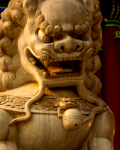-
Spanish peso spawned US dollar and the yuan
History repeats, and so it was with the Silver Way, successor to China’s ancient Silk Road.Today’s China is a rising world power that can be bewildering, increasingly willing to go its own way outside the structure of multinational institutions.China bewildered the Spanish of 450 years ago as well, restricting navigation, wanting to set the terms of trade, rarely amenable to either persuasion or the use of force – expecting the world to accept it on its own terms . . .
“Those who cannot remember the past are condemned to repeat it.” – philosopher George Santayana.
SURPRISING as it may seem, the looming U.S. — China trade war is a complete about-turn from the first global trading exchange between China and the Americas — the Ruta de la Plata or Silver Way.
That trade lasted for 250 profitable years, ushering in what we now term “globalisation”.
Its largely forgotten history is concisely recalled (87 pages) in The Silver Way (Penguin - China Specials, 2017), by Peter Gordon, founder/editor of the Asian Review of Books, and historian Juan Jose Morales, former President of the Spanish Chamber of Commerce in Hong Kong.
The trade left some enduring benefits: spurring economic and cultural exchange between East and West; the rise of Mexico City as the world’s first “world city”; a population spike and agricultural transformation in China through the introduction of New World crops like maize, sweet potatoes and peanuts; and, not least, the foundation of the first global currency, in the shape of the Spanish silver dollar.
The link between the narrative of the Silver Way and the later Anglo-American narrative is silver — or, rather, the monetisation and integration of the world’s economies via currency and financial markets.
The link remains today in the form of the US dollar and the Chinese yuan — both of which are descended from the Spanish peso.
In 1565, the Spanish explorer Andres de Urdaneta discovered how to sail east from Asia, back across the Pacific to the Americas.
By following “Urdaneta’s route”, his friend, Miguel Lopez de Legazpi, was able to establish Manila in 1571 as a Spanish regional trading hub, to foster an East-West trade — most importantly, silver from the New World in exchange for Southeast Asian spices, Chinese porcelain and silks, Indian fabrics, and rubies and emeralds from India and Ceylon.
This led to the creation of the world’s first global shipping line — the Manila galleon.





